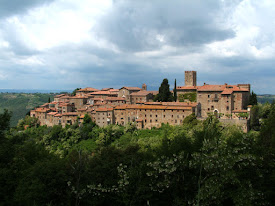Modern impressionist who funded his art with restoration projects
 |
| Dossena was in demand for his restoration skills |
Known more often simply as Giuseppe Dossena, he showed a talent for sculpture during his early years but preferred painting and soon began to produce outstanding landscapes in a neo-impressionist style.
With a young family to support, however, he had to find ways to supplement his income and eventually found regular work restoring and decorating villas and castles for a string of rich or aristocratic clients.
In the late 1960s and early 1970s, Dossena spent a number of years living in the United States, where he was employed as a restorer of priceless artworks owned by institutions ranging from the Metropolitan Museum of New York to the Playboy Club.
As a child, he grew up in difficult circumstances, not helped by the death of his father when he was only 12 years old, which meant he had to give up school along with the older of his two brothers and find a job that would help support his mother and the three other members of the family.
Eventually, however, he was able to focus on his art and attended the Brera Academy and the Scuola di Castello in Milan, where he was able to hone his talent. He became friends with other painters, including Renato Guttuso, Domenico Cantatore, Umberto Lilloni and Aligu Sassu.
 |
| Dossena's 1976 painting, Giorno di Mercato, is an example of his work |
His growing family meant he had to take a job rather than hope to live on the proceeds of his easel work, which was largely confined to his spare time. Fortunately, he found a profitable outlet for his ability as a specialist in the restoration and decoration of villas and castles and painted frescoes for churches.
His clients from the world of industrial entrepreneurs included the Pirelli, Invernizzi and Borletti families, while he also took on projects for the aristocratic Cicogna and Castelbarco families. The conductor Arturo Toscanini employed him to decorate a villa and the castles of Parrano and Monte Giove in Umbria were both restored by Dossena.
The Italian Embassy in Addis Ababa, capital of Ethiopia, commissioned work by him only for it to be destroyed in bombing raids in World War Two.
Meanwhile, he began to acquire a following for his own impressionist paintings and his first major exhibition, at the Galleria Gavioli in Milan in 1943, not only attracted critical acclaim but was lucrative, too, with every exhibit sold.
For the next 25 years, Dossena continued to combine his restoration projects with his easel work, exhibiting from time to time and opening a studio in Milan.
 |
| Dossena's 1980 painting, Parco Sempione |
It proved a successful venture. As well as taking a job with the Studio Berger in New York, for whom he restored works by Renoir, Rembrandt, Picasso and other masters, Dossena was inspired enough by his new surroundings for his career to enjoy a revival. His new work was subtly different, still with its roots in neo-impressionism but with simpler lines and it was a hit with the critics, culminating in a series of well-received exhibitions.
Dossena returned to Italy in 1976 but his later years were blighted by leukaemia, which in time caused him to stop painting. Yet he remained artistically active, turning to poetry for an outlet. His work was published in numerous anthologies and won him several awards before he died in 1987 at the age of 83.
 |
| The medieval hilltop village of Parrano, where Dossena helped restore the castle |
Parrano in Umbria, where Dossena worked on restoring the castle, is a good example of a medieval Umbrian village. Situated about 35km (22 miles) southwest of Perugia and about 50km (31 miles) northwest of Terni, Parrano has sections of its original walls and two well-preserved gates. The castle itself was advertised for sale this year with potential to be developed as a luxury hotel. Conversion work has already taken place to create 26 suites and a spa centre, while the estate that comes with the castle included four extra buildings in the heart of the village and 23 farmhouses in the surrounding countryside.
 |
| Lodi's central square, Piazza della Vittoria, is one of the most beautiful in Italy |
Lodi is a city in Lombardy, to the south of Milan and on the right bank of the River Adda. The main square, Piazza della Vittoria, has been listed by the Touring Club of Italy as among the most beautiful squares in Italy with its porticoes on all four sides. Nearby Piazza Broletto has a 14th century marble baptismal font from Verona.The city retains a mostly Medieval layout, starting from the remains of the Visconti Castle, built by the ruling Visconti family alongside the city walls in 1370. The churches of San Francesco and Sant’Agnese are worth a look, as is the 13th century church of San Lorenzo.
Also on this day:
1813: The birth of forgotten opera composer Errico Petrella
1907: The birth of actor Amedeo Nazzari
1921: The birth of lawyer and football administrator Giuseppe Prisco
1936: The death of playwright and novelist Luigi Pirandello













